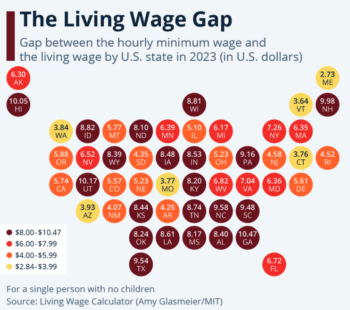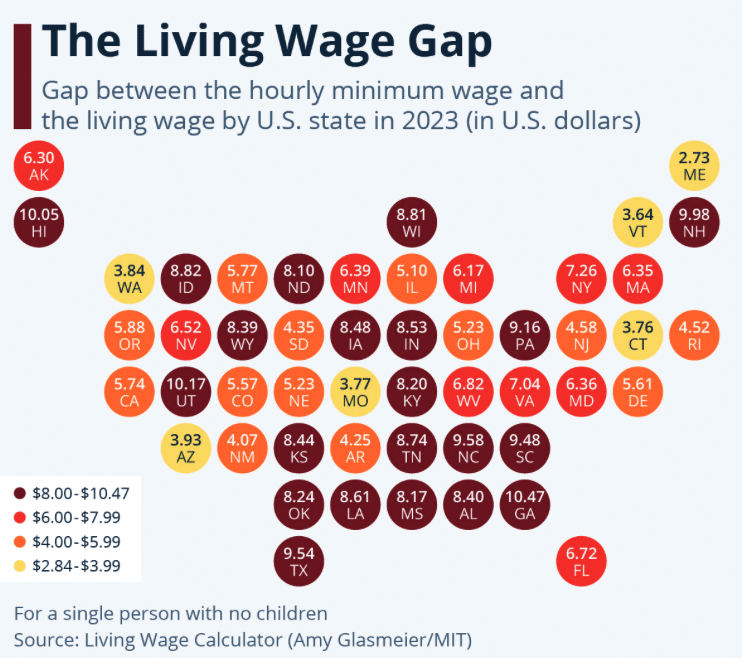According to an analysis from the Massachusetts Institute of Technology, the minimum wage does not suffice to pay for a typical set of living expenses in any state of the United States. Hawaii, Georgia and Utah, where the living wage gap exceeded $10 per hour, fared the worst.
While Georgia and Utah only apply the federal minimum wage of $7.25 per hour, Hawaii has a substantially higher minimum wage of $12 – once more to be increased to $14 on Jan. 1, 2024. Yet, the extremely high living costs on the inland group have created the highest living wage gap in all of the country this year.
In general, states which stuck to the federal minimum created above average gaps. Out of the 21 states which had a living wage gap above $8 this year, all except Hawaii were on the federal minimum wage. As states on the federal rate generally don’t increase their minimum wage, employees’ earnings were not adjusted in 2022 and 2023 for high inflation rates, causing living wage gaps to open up even more. While before the cost-of-living crisis, only three states saw gaps of more than $8 per hour, this increased to 21 in 2023 exclusively due to federal minimum wage states. Virginia was the state exiting the highest bracket, reducing the living wage gap from more than $9 to just over $7 by introducing a state minimum wage that marked the first increase to the rate in 11 years. The change started in 2021 and Virginia’s minimum wage will reach $15 in 2026.
Some states on the East Coast that like Virginia include or are in the vicinity of major cities also had higher wage gaps but none exceeding $8. New York saw a gap of $7.26 per hour this year, while Florida had a gap of $6.72 and Maryland of $6.36 despite these states mandating higher minimum wages.
The smallest gaps could be found in Washington, Vermont and Maine, where cost of living remained below metropolitan rates and minimum wages of $13 and above kept at least some pace with inflation.
To calculate the living wage, typical housing, living, childcare and healthcare expenses were calculated for the respective areas.


